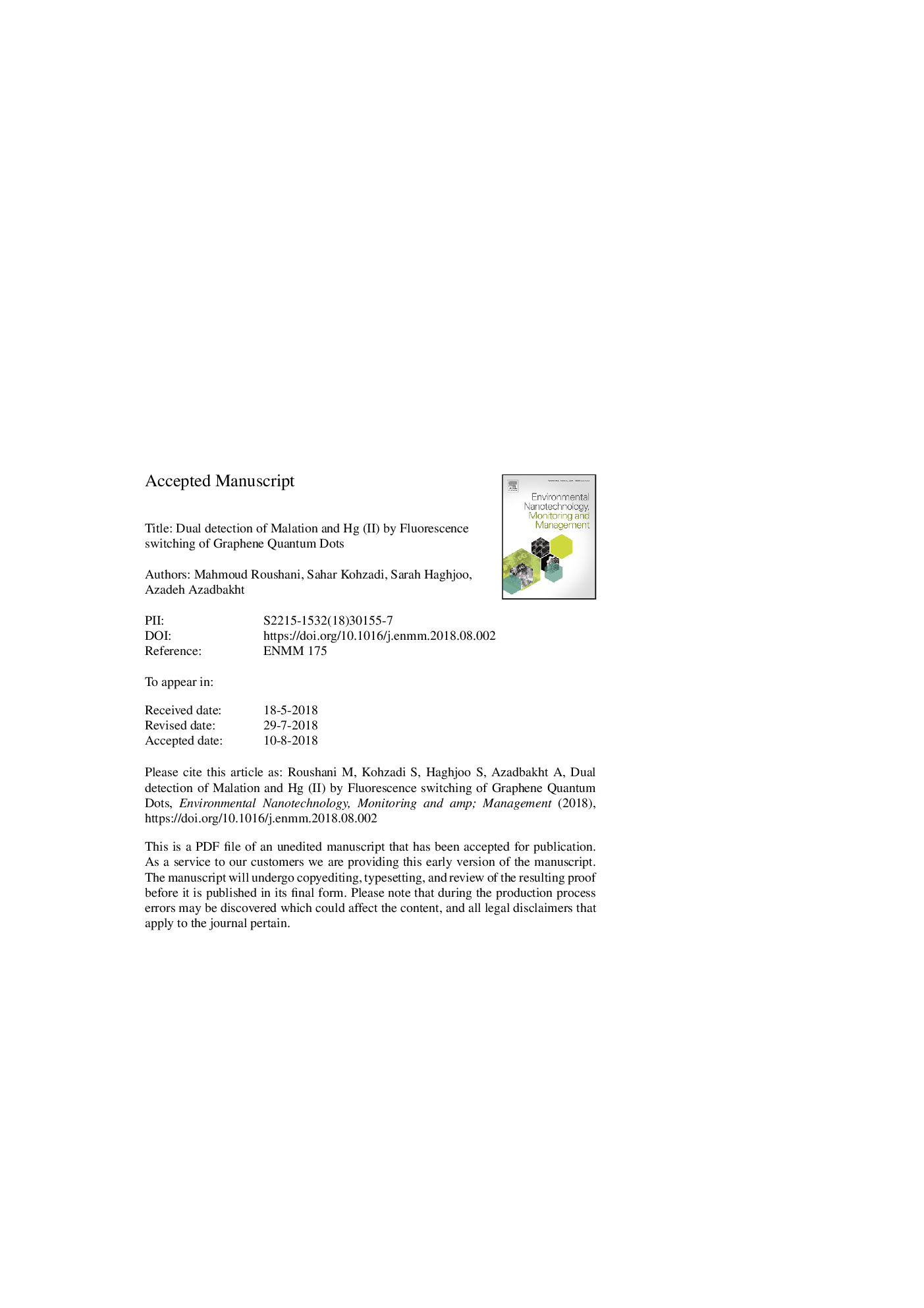| Article ID | Journal | Published Year | Pages | File Type |
|---|---|---|---|---|
| 8855635 | Environmental Nanotechnology, Monitoring & Management | 2018 | 22 Pages |
Abstract
The present study investigates sensitive and selective “off-on” method to analyze and detect mercury ions (Hg2+) and Malation pesticide using graphene quantum dots (GQDs) as a new ï¬uorescent (FL) probe. When GQDs are present, Hg2+ cations are capable of being coordinated on the GQD surface by their negatively charged surface. The process of absorption occurs using electrostatic interactions. Hence, the FL of the GQDs would be remarkably quenched (turn-off) at 463ânm for 1 μM Hg2+ as a result of FL charge transfer. Nevertheless, when 40 μM of Malation is added to the GQDs-Hg2+ solution, the FL of the GQDs enhances significantly at 463ânm (turn-on), since Hg2+ is combined with SR- group in the Malation rather than with the GQDs in the aqueous solution. Instead of the weak electrostatic interaction, a strong metal-thiol bond interaction is formed between Hg2+ and Malation and an enhancement in the FL of GQDs is observed. Finally, acceptable linearity for Hg2+ and Malation detection is obtained in the concentration ranges of 1-10âμM and 10-80 for Hg2+ and linear range of 80-120âμM for Malation with an LOD of 0.5 μM and R2â=â0.99.
Keywords
Related Topics
Life Sciences
Environmental Science
Environmental Chemistry
Authors
Mahmoud Roushani, Sahar Kohzadi, Sarah Haghjoo, Azadeh Azadbakht,
